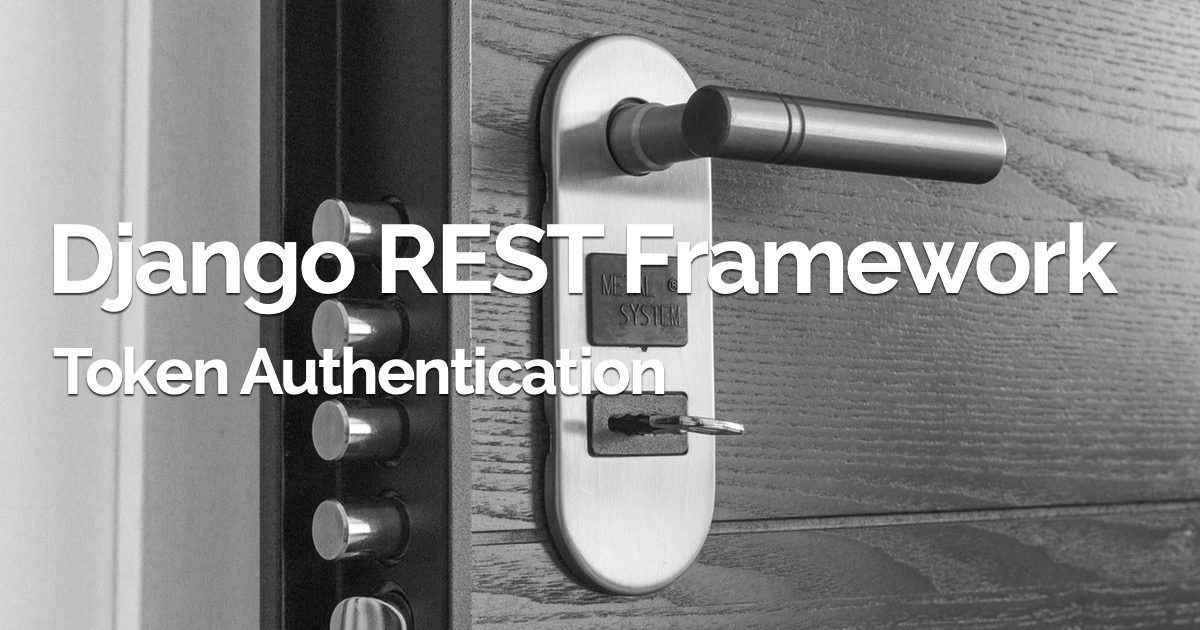

- #DJANGO REST FRAMEWORK AUTH0 FULL#
- #DJANGO REST FRAMEWORK AUTH0 PASSWORD#
When the form is submitted, Google will call your backend via a callback API. Your front-end should redirect the user to the official Google OAuth2 page. The main difference is that you no longer need to use iframes. This approach is very similar to the client-side one. Consider doing this instead of spending your time debugging why your third-party log-in flow is not working as expected. It's relatively easy to build this infrastructure on your own as we'll show you in the examples below. We believe that you won't use more than 2 or 3 OAuth2 providers in your app. The implementations are usually over-engineered to cover all possible providers (e.g. We didn't add this to the example to have it more simple. It was really hard to make any of the above packages fit our needs properly. In the real-life example, we had certain requirements that added some business logic on top of the OAuth2 flow. We don't need it in the admin views for example. We want to have an OAuth2 flow on our front-end only. We don't need any of this since we're only using DRF API Views. Most of the implementations are tightly connected to Django's Views and Middlewares. We don't want to waste time in such situations anymore. 
We were in a situation where we copied an initial configuration of a package that we hadn't actually installed.
It's almost impossible to find what you're searching for in the search engines because the names of the packages are really close. This is the main reason we've decided to implement the OAuth2 flow on our own. If you check the official Django packages for OAuth2 (and this doesn't even include the DRF ones), you'll find out that there are a lot of packages from which you can choose from: We said that the situation is a little bit messy right now and here is why. That's why we decided to use the Google OAuth2 provider for our examples. We cannot think of a platform that we've used recently where we couldn't log in using a Google account. Logging users in using OAuth2 is a common thing for most websites nowadays. Our goal is to transform it into this ( server-side flow): Before we start: OAuth2 & Django Here is a simple diagram that shows the current implementation that we have ( client-side flow): You can read our previous blog post for more info. The only secure way to do this is by taking the server-side route. This is expected because Google requires us to perform this in a secure way. We were not able to access the more "sensitive" Google APIs and fetch more protected information for the user. We've encountered various limitations when we used the client-side OAuth2 flow. If you've found this useful, don't forget to give us a ⭐. It's deployed here so you can give it a try before diving into the blog post. #DJANGO REST FRAMEWORK AUTH0 FULL#
In this article, we'll show you an implementation of the server-side Google OAuth2 flow.Īll of the code examples and the full implementation from this article are placed in this GitHub repository. Here we will migrate the OAuth2 flow from the client to the server. This article is a follow-up from this one. We've written a new version of this article, that you can find here - Adding Google login to your existing Django and Django Rest Framework applications
#DJANGO REST FRAMEWORK AUTH0 PASSWORD#
Verify that apache2-utils (Debian, Ubuntu) or httpd-tools (RHEL/CentOS/Oracle Linux) is installed.Ĭreate a password file and a first user.⚠️ Heads up ⚠️ This article is now outdated. To create username-password pairs, use a password file creation utility, for example, apache2-utils or httpd-tools Password file creation utility such as apache2-utils (Debian, Ubuntu) or httpd-tools (RHEL/CentOS/Oracle Linux).

HTTP Basic authentication can also be combined with other access restriction methods, for example restricting access by IP address or geographical location. Usernames and passwords are taken from a file created and populated by a password file creation tool, for example, apache2-utils.

You can restrict access to your website or some parts of it by implementing a username/password authentication. Restricting Access with HTTP Basic AuthenticationĬontrol access using HTTP Basic authentication, and optionally in combination with IP address-based access control.








 0 kommentar(er)
0 kommentar(er)
